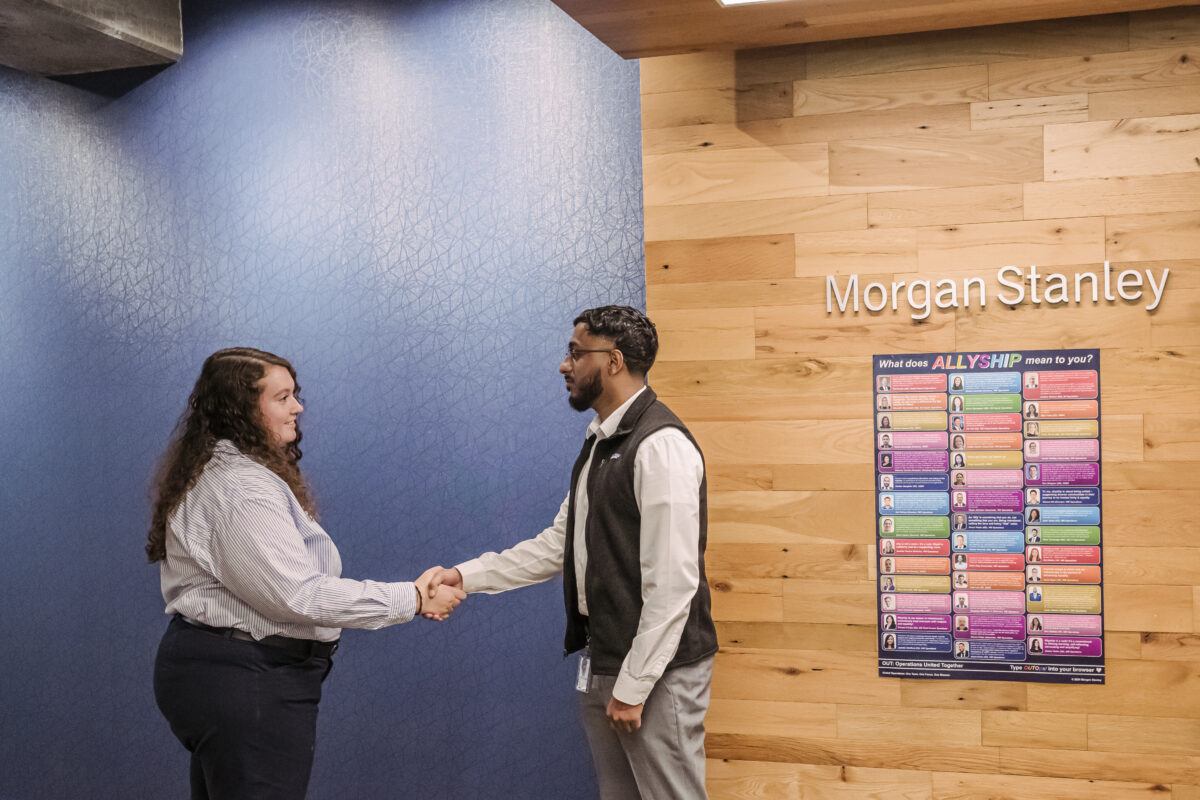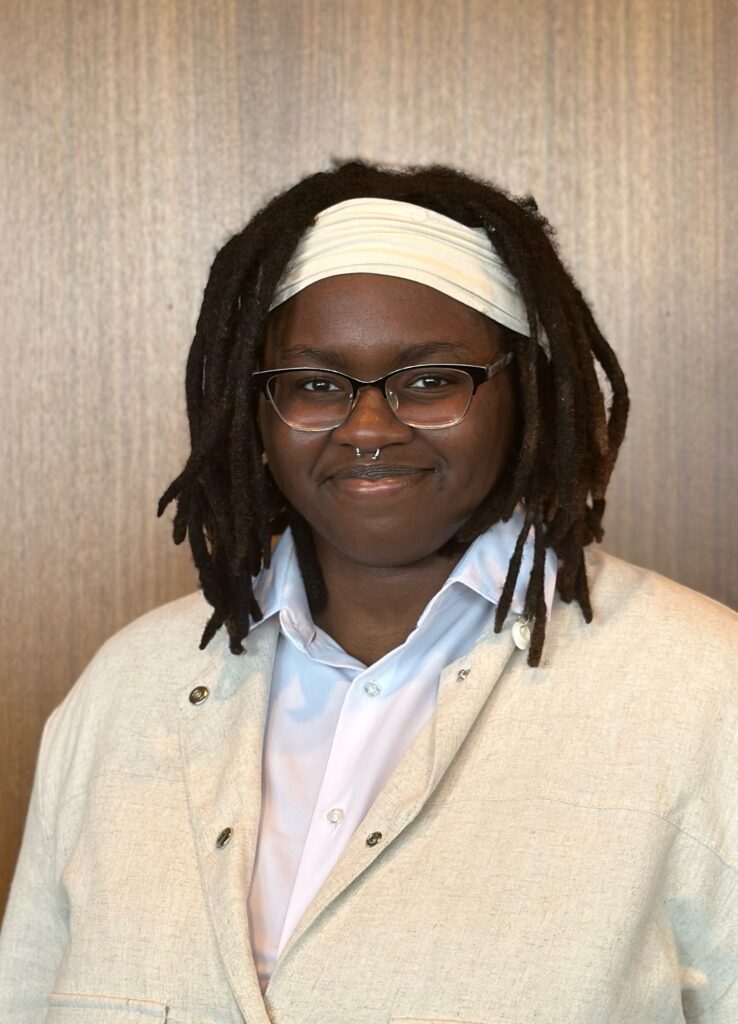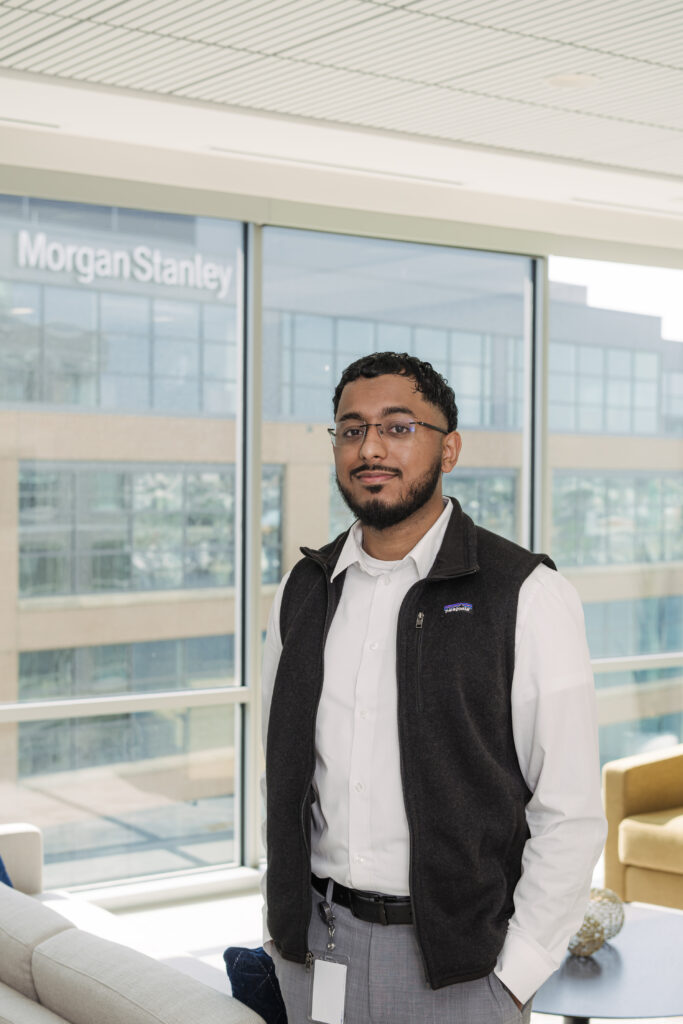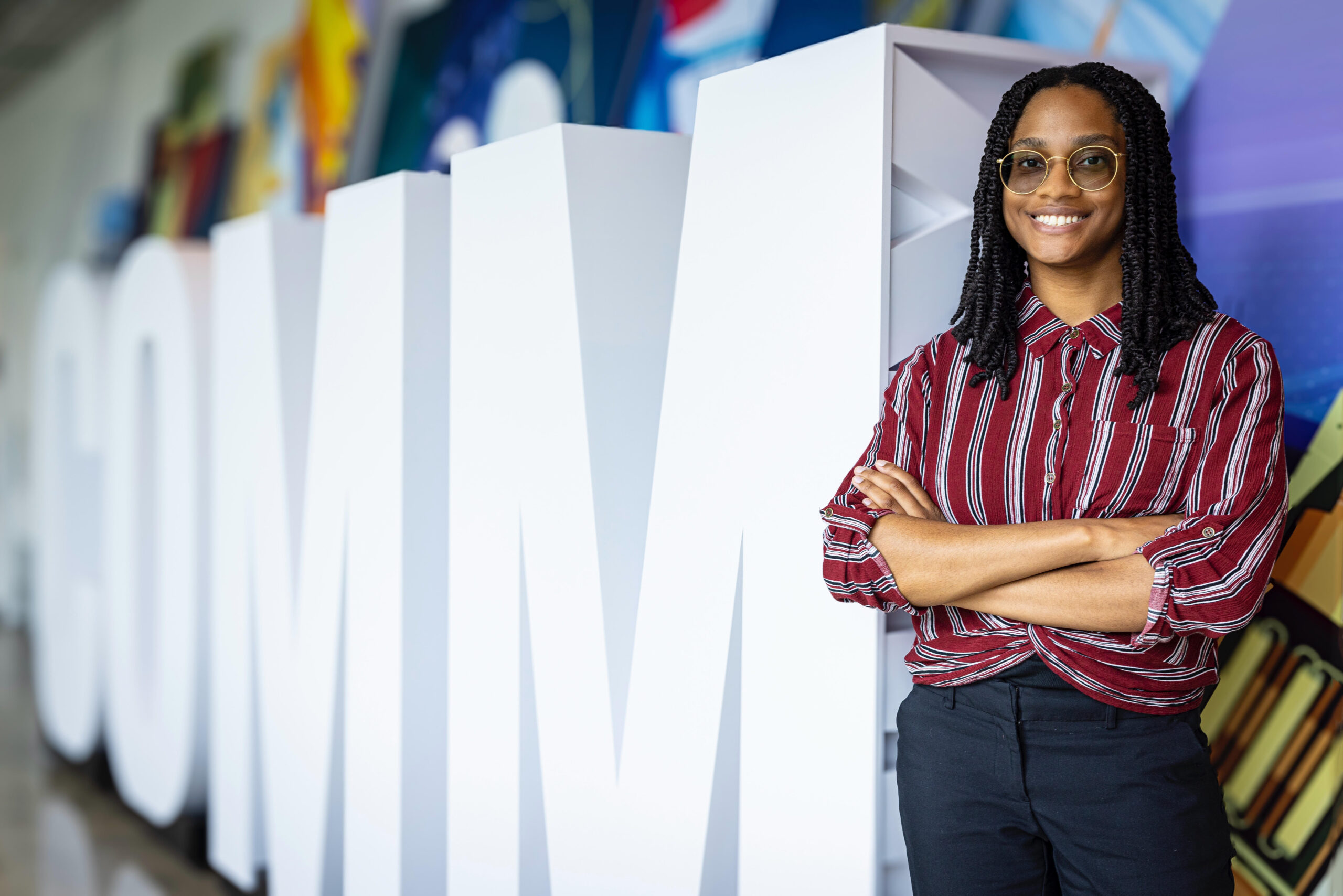Anil Shaji was pretty content going to UMBC for classes and returning to his home in Elkridge, Maryland, as soon as his academic obligations were over. Until one day, a notice on myUMBC caught his eye—the Career Center was organizing an exploratory trip to Morgan Stanley for potential interns that week. As a senior studying political science, Shaji had originally imagined a role for himself at a security agency or somewhere in politics, not a financial institution. But expanding his perspective, he stepped out of his comfort zone and thought, “Why not take the trip?”
Shaji took a UMBC bus with about 20 other interested students and spent the day chatting with Morgan Stanley recruiters about what the three-month, full-time paid internship would look like. Shaji went home and quickly updated his resume, completed a virtual interview, and submitted his application. Later, Shaji was invited to SuperDay, where top candidates undergo multiple rounds of interviews with the firm. Eight months later, he’s wrapping up his placement as an operations summer analyst in Morgan Stanley’s institutional securities group and he sees a viable future using his major in a financial services career.

“There are multiple paths—many that are not linear—to get to your longer-term goal,” says Marykate Conroy, associate director of internships and employment in UMBC’s Career Center who often coaches students through the internship application process. “Diverse experiences also may open doors for students that they didn’t even see as possible.”
Hundreds of Retrievers are completing internships this summer, putting their skills to use in real life settings and trying out roles in industries they might want to pursue after graduation. Many of these students are discovering how their goals could be supported and strengthened by an internship not originally on their radar.
Looking for creative freedom
When Kayla Moore saw a LinkedIn post advertising a graphic design internship for the communications department at Johns Hopkins Applied Physics Laboratory (APL), she was initially hesitant to apply for several reasons. Moore, a senior studying visual arts, was aware of Johns Hopkins, but didn’t know anything about APL, and she was nervous about the communications-side of things—would she be required to write? She didn’t see what she did yet as a designer as a way of communicating content to an audience.
She went into her internship search “wanting to find something in the middle of having creative freedom and being structured. And this role has been ideal,” Moore says. So far, she’s designed graphics for papers, posters, and her favorite project—a sticker for a company family fun day. She pitched the design as a “draw your own picture” sticker that includes an APL logo or phrase, and to her surprise, that’s what the team went with.

The biggest skill she’s learned so far? Communication, she laughs. In past roles, she says, she’s finished her design and passed it along to her supervisor or professor and that was it. At APL, “I have to talk to at least four or five people before anything goes to print,” says Moore. “Someone reviews my design and offers feedback; someone checks for spelling. And then I need to talk to the print shop and ask if things look good. So communication was definitely the biggest thing that I’ve learned in order to make sure I’m not slowing down the process to get a project out.”
Let your motivation lead you
Misan Ayomike is spending the summer at the University of Chicago in an economics internship with Pietro Veronesi, a preeminent economist and a dean at the University of Chicago Booth School of Business. The catch? “I’m not really that cognizant in the econ field,” Ayomike freely admits. “I’m an information systems major senior.” But Veronesi was open to any major “with strong quantitative and analytical backgrounds” and good references to work on his project researching the R&D costs for oncology, and Ayomike knew she’d get what she wanted out of the internship—feedback on her own ongoing research project.


Left: Headshot of Misan Ayomike. Right: Ayomike at the Leadership Alliance Conference after presenting her own research project conducted during her internship at the University of Chicago. Photos courtesy of Ayomike.
When Christine Routzahn, director of UMBC’s Career Center, brought this opportunity to Ayomike, she jumped at the chance to earn a sizeable stipend, experience life in a different city, and have dedicated time and feedback while conducting her own manual and statistical review on how accurate and efficient Chat GPT’s 4o AI model is at reviewing and replicating data from annual reports of pharmaceutical companies. The internship, coordinated through the Leadership Alliance, culminated in a conference where Ayomike presented her work.
Ayomike’s advisor Bill Ryan, a lecturer in information systems, was one of her references when she applied. Looking back, he knew she’d be a good fit because “she liked and enjoyed research, as well as understood and sought out articles of interest in her topic areas,” he says. “This opportunity would provide her with that research opportunity and to also demonstrate some of the learning she’s done in information systems. It was an opportunity to pull everything together that motivated her.”
Relying on different strengths
Within his major, Shaji says, his favorite classes have been intelligence-based or about international relations, so originally he thought that meant pursuing an internship at a place like Northrop Grumman or the CIA. But after visiting Morgan Stanley, he saw the social sciences connection. “The banking industry is heavily regulated and there are laws in place that banks need to follow, so what Congress passes affects the firm as well as the clients.”
For Shaji’s role at Morgan Stanley, he’s looking at new types of data every day. “When we lend securities out to hedge funds, we need to observe whether they’re in compliance—whether Morgan Stanley is properly making those transactions or actions—and we’re ensuring that we’re following all protocols internally as well as with government regulations,” says Shaji. “We are working to ensure that the numbers are all adding up correctly as they should.”
Shaji’s biggest takeaway from Morgan Stanley was how necessary voices are from all perspectives. “When you bring in a group of people who are quantitative majors or political science majors and art majors and you put them into a group,” he says, “they can truly build out some awesome solutions to existing problems. But it requires all those different perspectives—all those different strengths—put together.”
Right: Anil Shaji in the offices at Morgan Stanley in downtown Baltimore. (Marlayna Demond ’11/UMBC).

No such thing as a “perfect internship”
While some students may have difficulty thinking about options other than their ideal placement, says Conroy in the Career Center, eventually students become excited about the increased options and opportunities that won’t throw them off track with their future goals. “The pressure to get the ‘perfect internship’ is released,” she says.
Moore, at APL, was excited to dive into the world of digital design but says she knows now she wants to explore positions that also let her work with her hands. When thinking about advice for other Retrievers looking for internships, she says, “Think about it as an extended job interview—there’s always a chance you can get hired on afterward, but also it’s an experience for you to see if you actually really like this industry.”
Ayomike concluded her internship by presenting her own research at a Leadership Alliance conference in Harford, Connecticut. Thinking back over her summer at the University of Chicago, she says, “I hadn’t ever really thought of going into econ or research, so this experience broadened my field of thinking. I learned about a lot of things I did not know that I did not know.”
Tags: CAHSS, Career Center, COEIT, Information Systems, Political Science, visual arts

